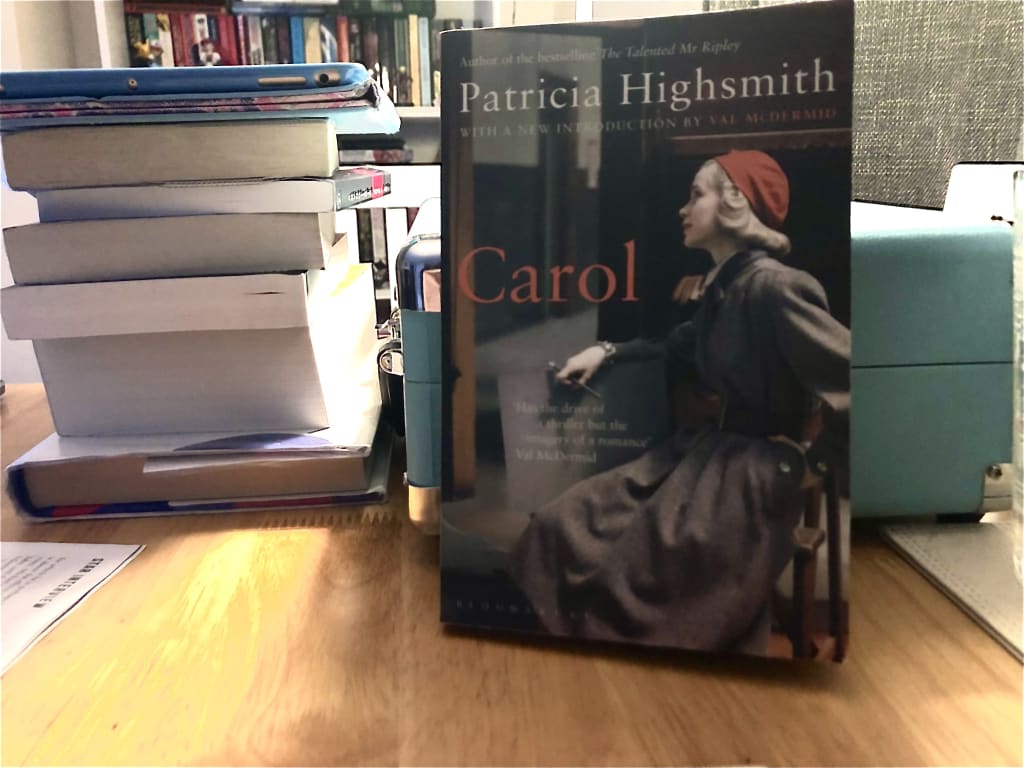Carol by Patricia Highsmith
Book review of the classic novel

This book was originally published in 1952 under the title: The Price of Salt. Despite the author already being a household name, Harpers, her publisher did not want it because of the sapphic content. Instead, Patricia Highsmith went with Coward McCann, a small press under the pseudonym, Clare Morgan. At the time many referred to this book as the first lesbian novel with a happy ending. This might give readers the impression that Carol and Therese have a fairytale ending. Whilst the novel’s conclusion is not a whirlwind kiss and a honeymoon in the sunset, it felt like one.
As they mentioned in the notes on this book, homosexual characters often had tragic fates. Of course, other LGBTQ+ identities weren’t even considered in the 1950s. This novel made people happy because it offered better representation for LGBT+ people back in the 1950s. They were happy to have something that didn’t show gay characters being killed off, converting to heterosexuality or being depressed for the rest of their lives.
It’s still relevant today, especially with tropes such as bury your gays. Carol, or the Price of Salt is about a young girl called Therese with ambitions to work in theatre. At the start of the novel she is working in a department store in Manhattan. This is where she meets Carol. The fateful meeting changes her life forever when she falls in love with Carol.
This was a book that I wanted to read for a while. I haven’t seen the film yet, but I had heard great stuff about it. But I really wanted to read the book first before I saw the film. From the very start of the book, I had this strong American post-war vibes in the book. It was a modern book back then, but it still feels like something that could happen in our time too.
I also felt that Therese shares some similarities with the author. This is the first time I have read anything from Highsmith but something about Therese and this book felt believable and almost semi-autobiographical. I understand that Highsmith did work in a Manhattan department store which is likely where she got the inspiration for this book. She’s also had many relationships with women which I think would have helped making this novel and the love scenes feel more authentic.
At the time, she was going under a nom de plume and it feels like she was going all out. It worked in her favour and I can see why the book sold so well. It has many traits of whirlwind romance with passion and also plays on the social and morals at the time. Carol’s bitter divorce and custody battle over her daughter is a strong subplot. There’s a point where Carol has to choose between her daughter and the love of her life. To make this subplot impactful is her Carol’s ex hiring an investigator. If the courts knew she was a lesbian, it would destroy her in court. Any chance of having seeing her daughter again would be gone. It feels insane to writing the last sentence as a woman in the 21st century reviewing a book that is set in the 1950s.
The book is many things. The romance is tame for today’s standards but back then it wasn’t. There’s the loss of innocence and curiosity from Therese’s side as she falls for the older and mature Carol. The novel remains intense and paints a picture of the struggles these women have with their sexuality.
The best part of the book is the ending. It gives a message of hope for both Therese and Carol. They start off as lonely and depressed and by the end of the novel, they have become hopeful and more realistic. I do feel sad that Carol had to give up custody of Rinny after everything she had been through, but it fits the original title of the novel. The novel has an important message that it’s a high price to pay to be your authentic self.
The writing is excellent, the characters are strong and the pace is right for casual reading. However, I didn’t feel completely satisfied. I wanted more. As brilliantly crafted as the ending is, I feel that it was not quite the end of Therese and Carol’s story. The book was a slow burn and I hoped the ending would be more spectacular.
About the Creator
Chloe Gilholy
Former healthcare worker and lab worker from Oxfordshire. Author of ten books including Drinking Poetry and Game of Mass Destruction. Travelled to over 20 countries.






Comments
There are no comments for this story
Be the first to respond and start the conversation.